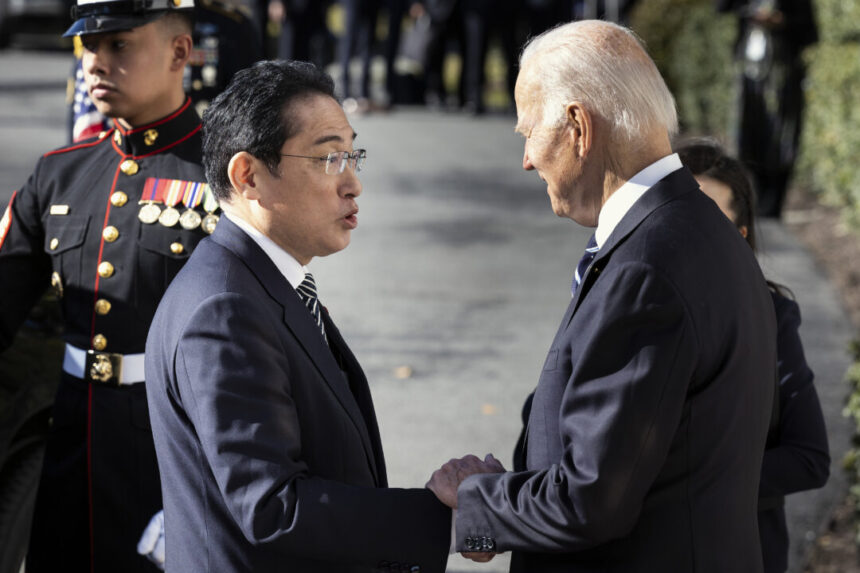Commentary
The Financial Times recently reported that President Joe Biden and Japanese Prime Minister Fumio Kishida will announce a plan in April to restructure the relationship between U.S. and Japanese forces in Japan. The aim is to enhance operational planning and exercises to better address the threat from communist China.
Articles like this generate excitement and hope, especially as the concept of restructuring the defense relationship between the U.S. and Japan has been long-awaited.
Despite a longstanding defense partnership, American and Japanese forces struggle to collaborate effectively, except in naval and missile defense operations. In the event of an attack on Taiwan, they would find it challenging to work together in combat.
When discussions of restructuring arise, the notion of establishing a joint headquarters in Japan for American and Japanese officers to coordinate defense activities, training, and operations becomes prominent.
The absence of such a centralized command center is a critical gap in the Japan-U.S. defense strategy, leading to ad hoc coordination efforts.
However, the proposed changes outlined in the Financial Times article may not substantially enhance the ability of U.S. and Japanese forces to work together effectively or engage in joint military operations.
Assigning a four-star general to lead U.S. Forces Japan and increasing collaboration with the Japan Self-Defense Force joint operational headquarters may not address the fundamental operational challenges.
For a meaningful improvement in the Japan-U.S. military relationship, a shift in mindset and structure is necessary, along with genuine commitment and investment from both sides.
Despite past criticisms and suggestions for improvement, there has been a lack of substantive action at the leadership levels to address the operational deficiencies.
It is essential to establish a robust partnership between the JSDF and U.S. forces to effectively counter regional threats and maintain stability in the Indo-Pacific region.
As the Biden-Kishida meeting approaches, the outcome of their discussions may shed light on the future direction of the Japan-U.S. military relationship and the efforts to strengthen operational capabilities.
Perhaps not.
It is surprising that after over 60 years, the Americans and Japanese still feel like “strangers,” and their military relationship remains superficial, lacking depth in many aspects.
However, there is some positive news: There are efforts being made at lower levels to improve collaboration between Japanese and American forces.
If President Biden and Mr. Kishida were to give the directive to “do what is necessary to enhance our ability to fight together (and visit Yokosuka Naval Base for inspiration if needed),” they would be pleasantly surprised by how quickly progress can be made.
Enough with the complaints. Here are some suggestions for establishing a joint/combined U.S.-Japan headquarters in Japan:
One suggestion is to create a “Joint Task Force Nansei Shoto.”
This task force would have a tangible mission of defending Japan’s southern islands and surrounding areas, requiring daily coordination, specific forces, and command structure to execute joint patrols, exercises, and defensive planning in an area facing increased Chinese pressure.
The headquarters could be based in Okinawa, with Kyushu as an alternative location if needed.
This approach would have significant political and psychological implications for Japan, the United States, and other partners like South Korea and Taiwan, particularly impacting China.
If executed successfully, this could pave the way for further development of the overall U.S.-Japan military relationship.
How challenging is this task?
It is only as difficult as one chooses to make it.
Views expressed in this article are the author’s opinions and do not necessarily reflect those of The Epoch Times.





